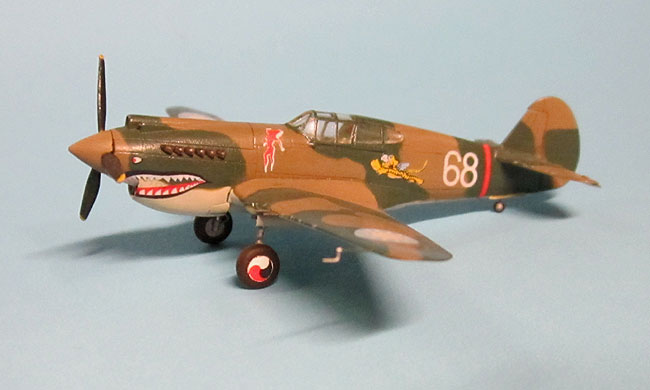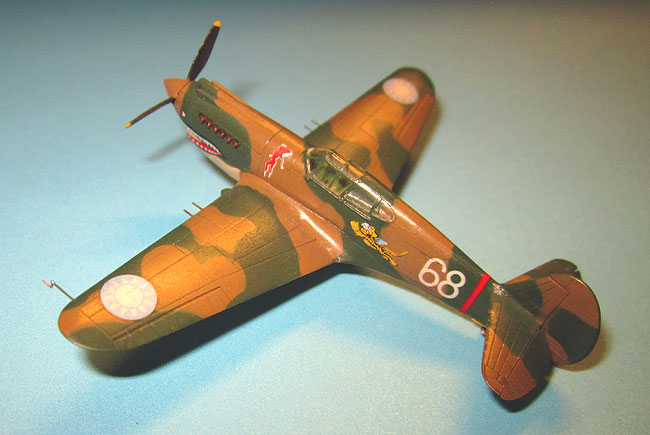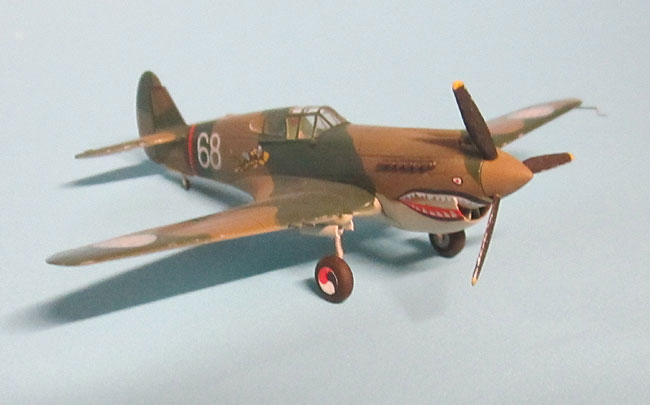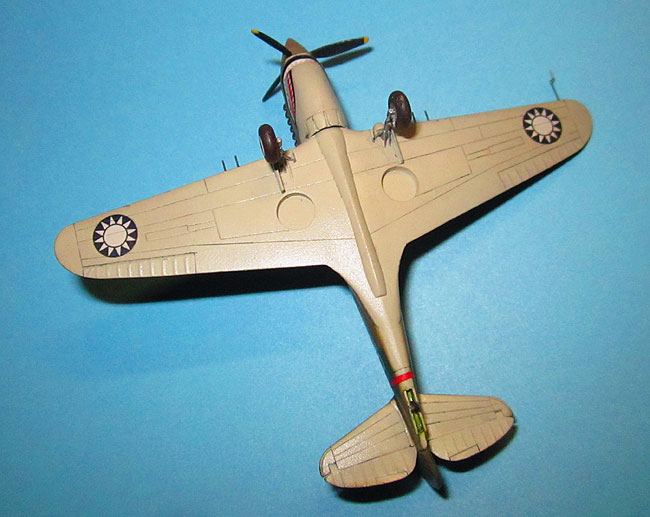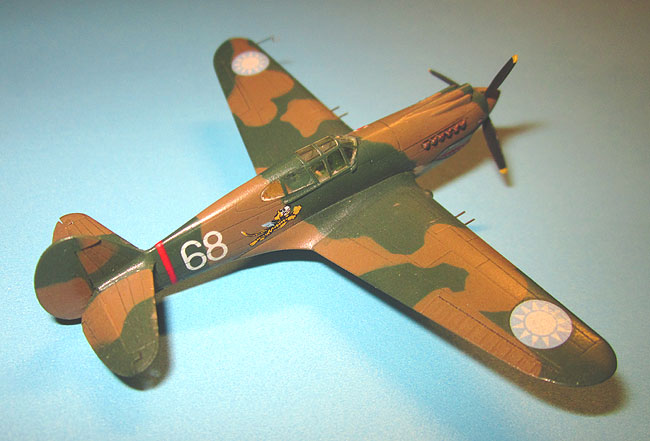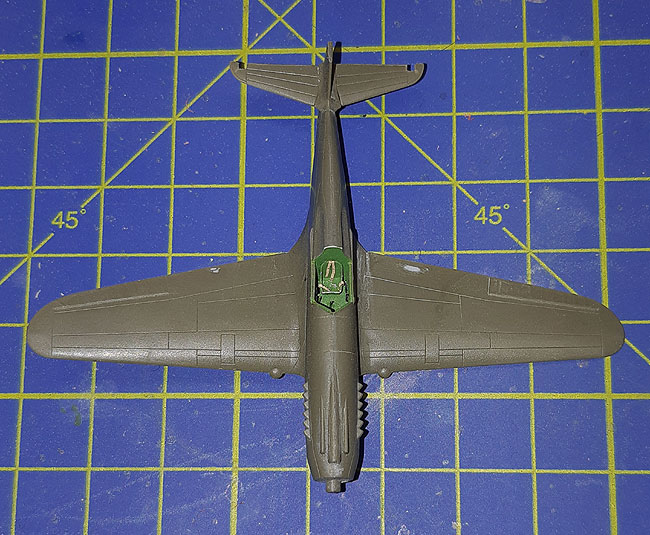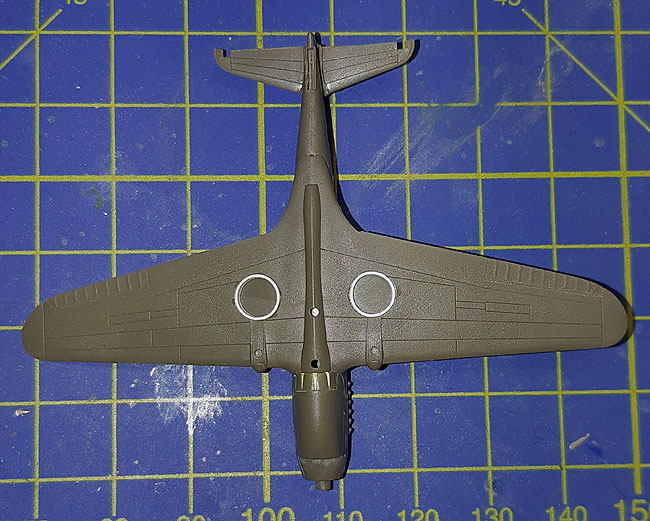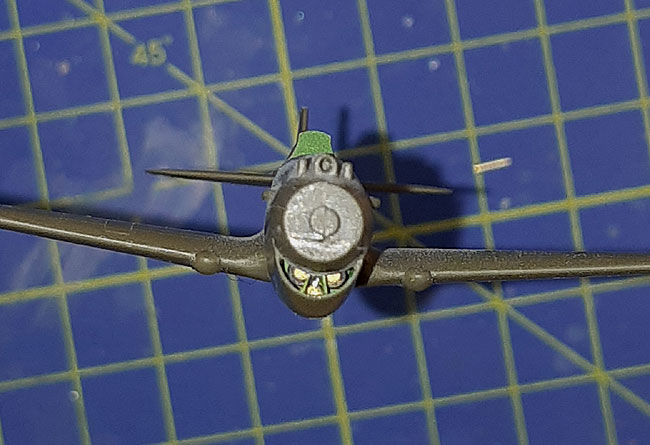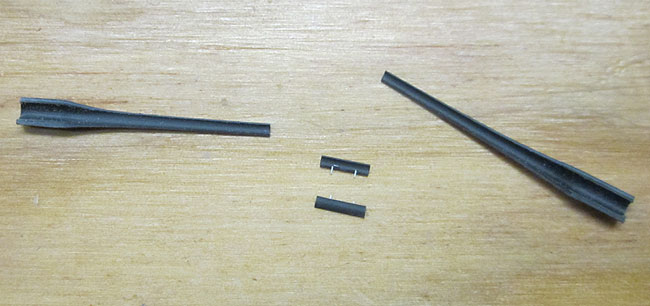| AFV Club 1/144 Curtiss P-40B |
| |
|
|
| A very surprising release, at least to me anyway. AFV Club
has, for many years, specialised in 1/35 scale armour kits, so a 1/144 scale
aircraft kit was not something I expected to see from them. Released back
in 2015, this was their first effort in that scale. The basic shapes are
there, but an awful lot is either poorly represented or missing completely.
Still, with a bit of effort it can be made to look like a reasonable facsimile
of a P-40. Their latest 1/144 kits, the Seaking and F4U Corsair, are superb
I might add - far superior to their line of P-40s (they also do a P-40E
and a P-40N). |
| |
|
|
| I added a rudimentary cockpit, opened up and detailed the
solid chin intake, corrected the oversized wheel wells, detailed the landing
gear, and added scratchbuilt landing gear doors and a pitot tube. The rudder
and elevators were cut off and repositioned and guns were replaced with
thin hypodermic tubing. Landing gear legs are a bit long so these were shortened
and the wheels were improved by carving them away slightly from the integrally
moulded gear legs. |
| |
|
|
| A grossly oversized belly tank was included with the kit but
fortunately not needed as AVG P-40s did not carry them. AFV Club state that
this is a P-40B/C or a Hawk 81-A2, but in fact the AVG aircraft were Hawk
81-A1s which were not plumbed for drop tanks. |
| |
|
|
| These aircraft were originally meant for the RAF but were
instead diverted to the American Volunteer Group in China. Thus they were
finished in a British camouflage pattern, though the colours Curtiss used
were not quite to RAF spec. I used Humbrol Dark Green (30), Camouflage Grey
(28) and US Light Earth (119), the latter looking closer to the colour pictures
I found online than Humbrol's RAF Dark Earth (29) does, which would normally
be used on an RAF aircraft in this scheme. |
| |
|
|
| |
|
|
| |
|
|
| No cockpit detail is provided in the kit so I moulded a seat
and added belts from thin strips of tape. A control stick, brake lever,
instrument panel and a few other bits 'n' bobs were thrown in for good measure.
It's more than enough under the closed canopy. |
| |
|
|
| The wheel wells were too large in diameter. Strips of .020"
plastic strip were wrapped around a suitably sized drill bit and dipped in hot
water briefly to set the shape. These were fitted in to reduce the wheel
well diameter then filled and sanded flush with the wing surface once dry. |
| |
|
|
| The chin and carb intakes were completely solid. These were
opened out and the oil cooler and radiators added to the chin intake along
with the diagonal guide vanes. |
| |
|
|
| There were no landing gear doors at all in the kit. A piece
of Contrail tubing was split in half lengthwise and then stretched over
a candle flame to produce the curved doors. Tiny hinges were added to help
position them. This worked surprisingly well and was quite easy to do. |
| |
|
|
| The canopy and rear windows are supplied as one piece, above
left. I cut these apart to make it easier to install the rear windows
above right, though in retrospect I may have
actually made it more difficult. The windows fit well into the recesses
moulded on the fuselage sides but they are so thin it would have been impossible
to just glue the edges. My thinking therefore was that I could use a thicker
adhesive which would also act as a clear filler behind the windows. I tried
clear epoxy and Testors Clear Parts Cement, both of which looked great when
first applied, however they left large and unsightly bubbles behind the
clear parts once dry. I then used Humbrol Clearfix which was slightly better,
though there are still a few bubbles which I just couldn't get rid of. I
was able to wick some Future into the bubbles to reduce them still further,
but alas, not eliminate completely. I'm not entirely happy with the way
these turned out so I'll have to have a rethink before I tackle the P-40E
sometime in the future. |
| |
 Back to 1/144th main Back to 1/144th main |
| |
